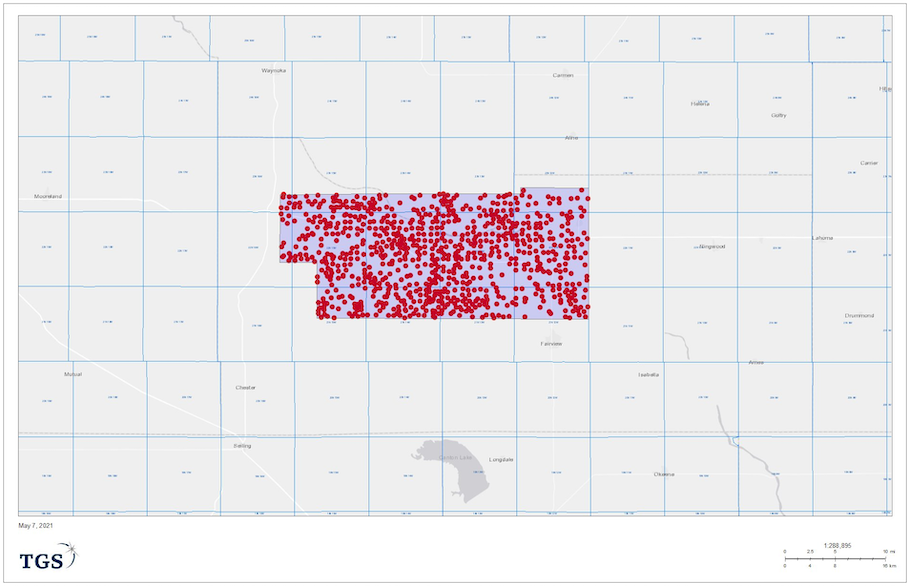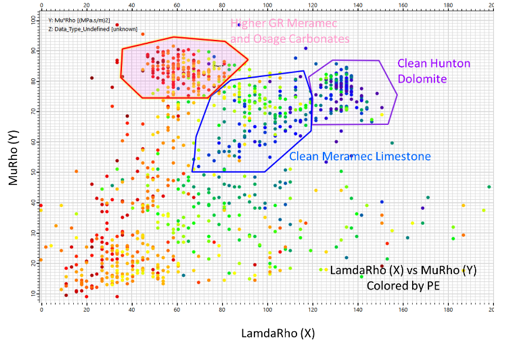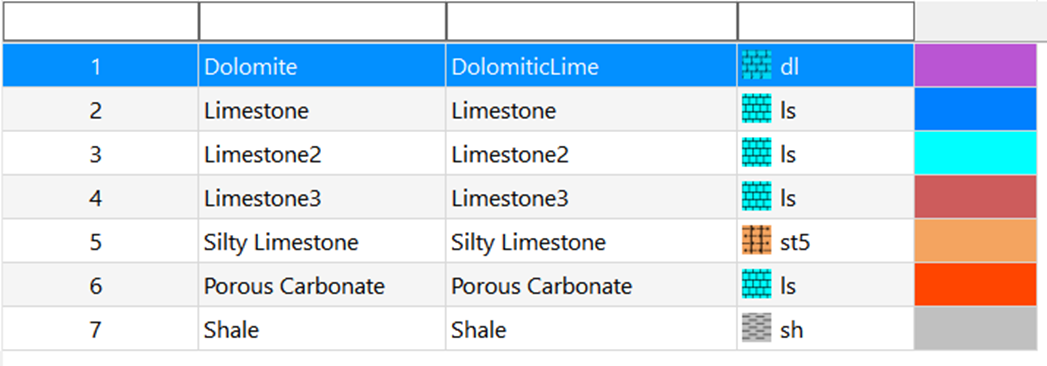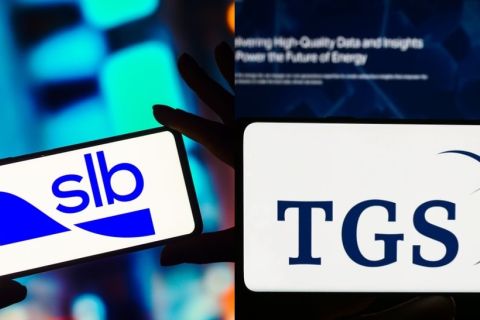Presented by:

Editor's note: This article appears in the new E&P newsletter. Subscribe to the newsletter here.
One of the holy grails in development geophysics is the estimation of rock properties using log data and seismic inversion results over unpredictable reservoir units like tight shales. Lateral drilling is performed within a sweet spot interval that’s often not more than 20 ft thick at a depth of up to 10,000 ft. However, within this interval, the geology can vary rapidly, and the variations in the rock type or reservoir quality often are below or just at the seismic resolution.
To overcome this, seismic prestack data are inverted to predict elastic properties. Well data, such as core information and electronic logs, are used to derive a relationship between various rock types and elastic properties. These relationships are then applied to the seismic attributes in various ways. If they are simple, a linear relationship can be derived. If they are more complex, machine learning and artificial intelligence (AI) are utilized. The result is a 3D rock property/lithology cube that assists in choosing well locations and infill wells and provides a valid tool to geosteer the lateral path of the well.
TGS and Integrated Subsurface Technology are demonstrating this method using an onshore dataset from the Anadarko Basin.
Input data
The South Gloss seismic 3D data are located in the Anadarko Basin and 232.5 sq miles. As Figure 1 illustrates, an excellent number of wells with sonic and density are available for analysis.
Historically, the number of wells that have a measured sonic and density log is not very high. Often, those log types are only recorded over short intervals, usually targeted toward the zone of interest. In geophysical applications, the p-sonic and density, and in a less crucial way, the s-sonic are essential. Those logs are the main link between well and seismic information. TGS solves this problem by using a unique analytical method to estimate p-sonic and density logs that are missing over larger intervals or haven’t been recorded at all. This ARLAS product leads to a very rich well log offering, as shown in Figure 1.

Figures 2a, 2b and 2c display a comparison between measured sonic, and measured and estimated sonic logs over the indicated trajectory in the Anadarko Basin. The display is not at scale, as wells are spaced equally for an easier presentation. S-sonic logs were not as readily available.



Method
To begin, the migrated prestack gathers were conditioned for the inversion. This conditioning included a Radon transform to attenuated interbed multiples, linear noise attenuation and a residual velocity analysis. Along the usable offset range, three angle stacks were generated. The well data were used for calibration purposes and to extract wavelets for the inversion. The main outputs are P-velocity, S-velocity, Vp/Vs, LambdaRho, MuRho, and the companies also attempted to estimate density.
The ARLAS well logs were edited if necessary and made a valid contribution to the process.
Seismic reflectivity is driven by velocity and density. The Zoeppritz equation widely used partitions reflection energy into three components: P-velocity, S-velocity and density. The traditional Vp – Vs cross plot is commonly used to demonstrate that these two critical seismic components distinguish lithology. A more elegant and definitive lithology distinction can often be made using the Lame parameters LambdaRho (incompressibility) and MuRho (rigidity). Density is often an unreliable output, as it has to be derived from the far offsets that are often not usable. The use of LambdaRho and MuRho precludes the requirement of using density in the lithology prediction. Figure 3 displays the LambdaRho - MuRho cross plot at the zone of interest and demonstrates that the various rock units within this interval are clearly being separated in this space.

Figure 4 illustrates a PSTM stack cross-section at the top and the inverted LambdaRho – MuRho lithology attribute at the bottom. A good correlation between the attributes and known geology can be observed.

A more complete lithology prediction can be made using an “electrofacies” model derived from a traditional triple combo and sonic logs. The model can be further refined by a detailed correlation of core to electric log. In this example, 12 wells from across the seismic survey were used as input to the neural network electrofacies classification. Logs included GR, Neutron, Density, P-sonic and PE.
In this project, the geological section of interest was broken out into seven distinct facies from the log analysis. The next step in the process comprised running a neural network prediction of those well-derived electrofacies using multiple seismic volumes as inputs. A probability function was then output from the neural network showing the quality or confidence in the prediction of a particular facies. This is especially important for the interpretation of the value of the product.
Figure 5a displays a comparison between the more traditional LambdaRho-MuRho and the electrofacies prediction on the same survey inline. Notice the detailed description in both the vertical and lateral direction. Figure 5b shows the corresponding color key. Both methods yield excellent results. However, more details are present in the electrofacies product.


Conclusions
Identifying lithology/rock types at reservoir intervals is desirable, especially onshore in unconventional reservoir types. In this analysis, TGS and Integrated Subsurface Technology showed an example of how they achieved this by integrating seismic prestack data and well data that have been augmented through machine learning.
Furthermore, TGS and Integrated Subsurface Technology investigated two different types of lithology inversions. The first product comprised a LambdaRho-MuRho lithology attribute. This is a more conventional approach that uses a LambdaRho MuRho crossplot to break out various lithologies. The second lithology prediction attribute was derived using seismic attributes, well information and machine learning. Both results are good, but the neural network-derived electrofacies attribute shows more details within the reservoir rocks.
Although seismic data have a limited vertical and lateral resolution, it should not be forgotten that all geology resides within the prestack data and that it's possible to detect the variability of the deposits by seismic waveforms. Prestack inversion using proper wavelet analysis and a rigorous neural network approach includes both well log and seismic scale and can provide results that identify in great detail the lateral variability of the formation and reduce the demand on vertical resolution to a more realistic understanding of vertical detection.
Recommended Reading
TGS, SLB to Conduct Engagement Phase 5 in GoM
2024-02-05 - TGS and SLB’s seventh program within the joint venture involves the acquisition of 157 Outer Continental Shelf blocks.
2023-2025 Subsea Tieback Round-Up
2024-02-06 - Here's a look at subsea tieback projects across the globe. The first in a two-part series, this report highlights some of the subsea tiebacks scheduled to be online by 2025.
StimStixx, Hunting Titan Partner on Well Perforation, Acidizing
2024-02-07 - The strategic partnership between StimStixx Technologies and Hunting Titan will increase well treatments and reduce costs, the companies said.
Tech Trends: QYSEA’s Artificially Intelligent Underwater Additions
2024-02-13 - Using their AI underwater image filtering algorithm, the QYSEA AI Diver Tracking allows the FIFISH ROV to identify a diver's movements and conducts real-time automatic analysis.
Subsea Tieback Round-Up, 2026 and Beyond
2024-02-13 - The second in a two-part series, this report on subsea tiebacks looks at some of the projects around the world scheduled to come online in 2026 or later.





